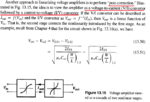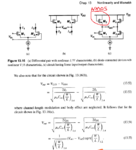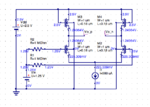fightshan
Junior Member level 3
Linearization techniques in Razavi <Design of Analog CMOS Integrated Circuits> Ch13
I am studying a high speed Track&Hold circuits in a high speed F/I ADC. In the T&H circuit , there are two buffers ,the input_buffer to isloate kickback noise and the output_buffer to supply an appropriate driving ability for the ADC core.
I select a NMOS source follower as the input_buffer, and a unit_gain op_amp which works in open loop state as the output_buffer.
The problem I meet now is the bad linearity of output buffer. In the Chapter13 of <Design of Analog CMOS Integrated Circuits> written by Razavi, a linearization technique called "post_correction" is introduced by Razavi, I am interested in this structure, but there is just a small section of this in the chapter ,and Razavi didn`t mention any reference. So, I wonder anyone can give more information about this "post_correction" tech?
I really appreciate anyone can discuss this with me!



I am studying a high speed Track&Hold circuits in a high speed F/I ADC. In the T&H circuit , there are two buffers ,the input_buffer to isloate kickback noise and the output_buffer to supply an appropriate driving ability for the ADC core.
I select a NMOS source follower as the input_buffer, and a unit_gain op_amp which works in open loop state as the output_buffer.
The problem I meet now is the bad linearity of output buffer. In the Chapter13 of <Design of Analog CMOS Integrated Circuits> written by Razavi, a linearization technique called "post_correction" is introduced by Razavi, I am interested in this structure, but there is just a small section of this in the chapter ,and Razavi didn`t mention any reference. So, I wonder anyone can give more information about this "post_correction" tech?
I really appreciate anyone can discuss this with me!




